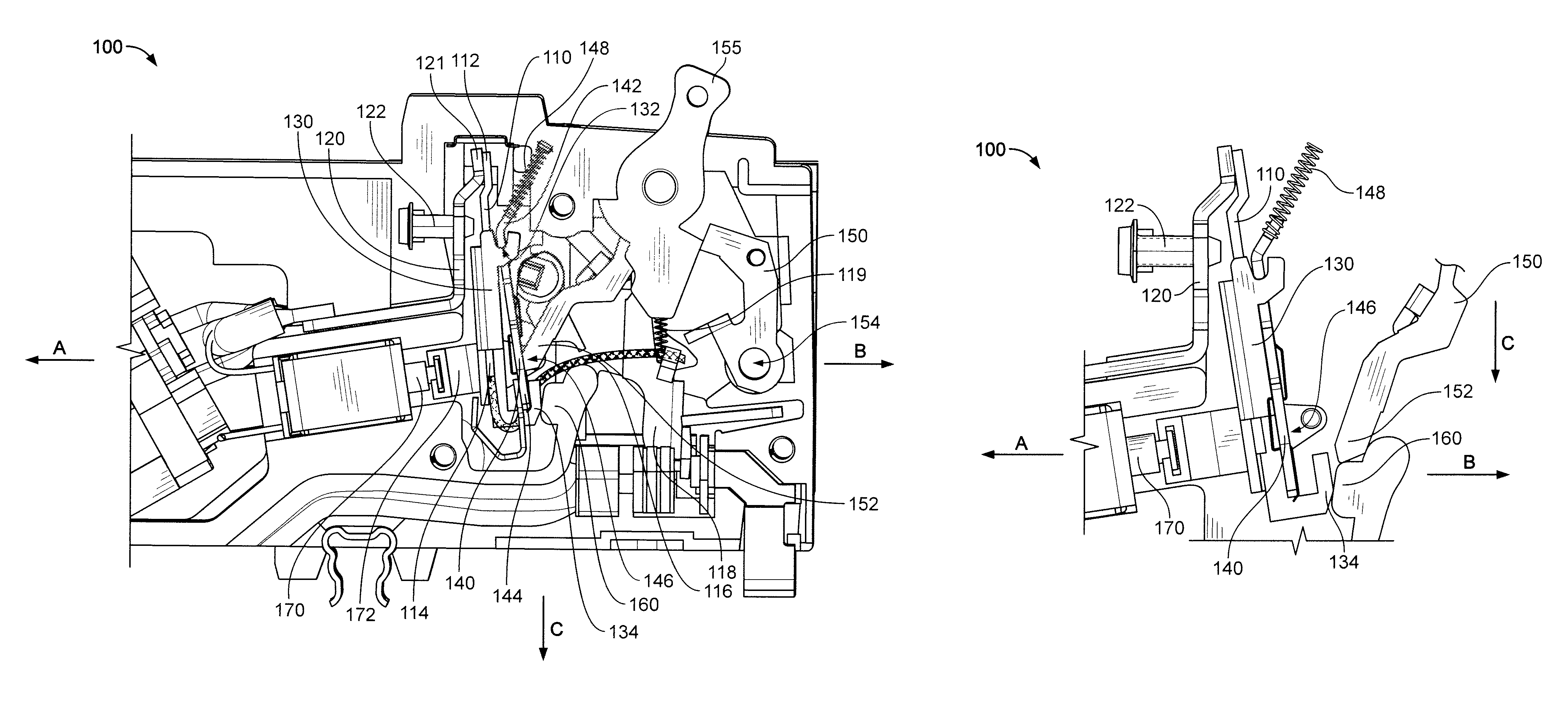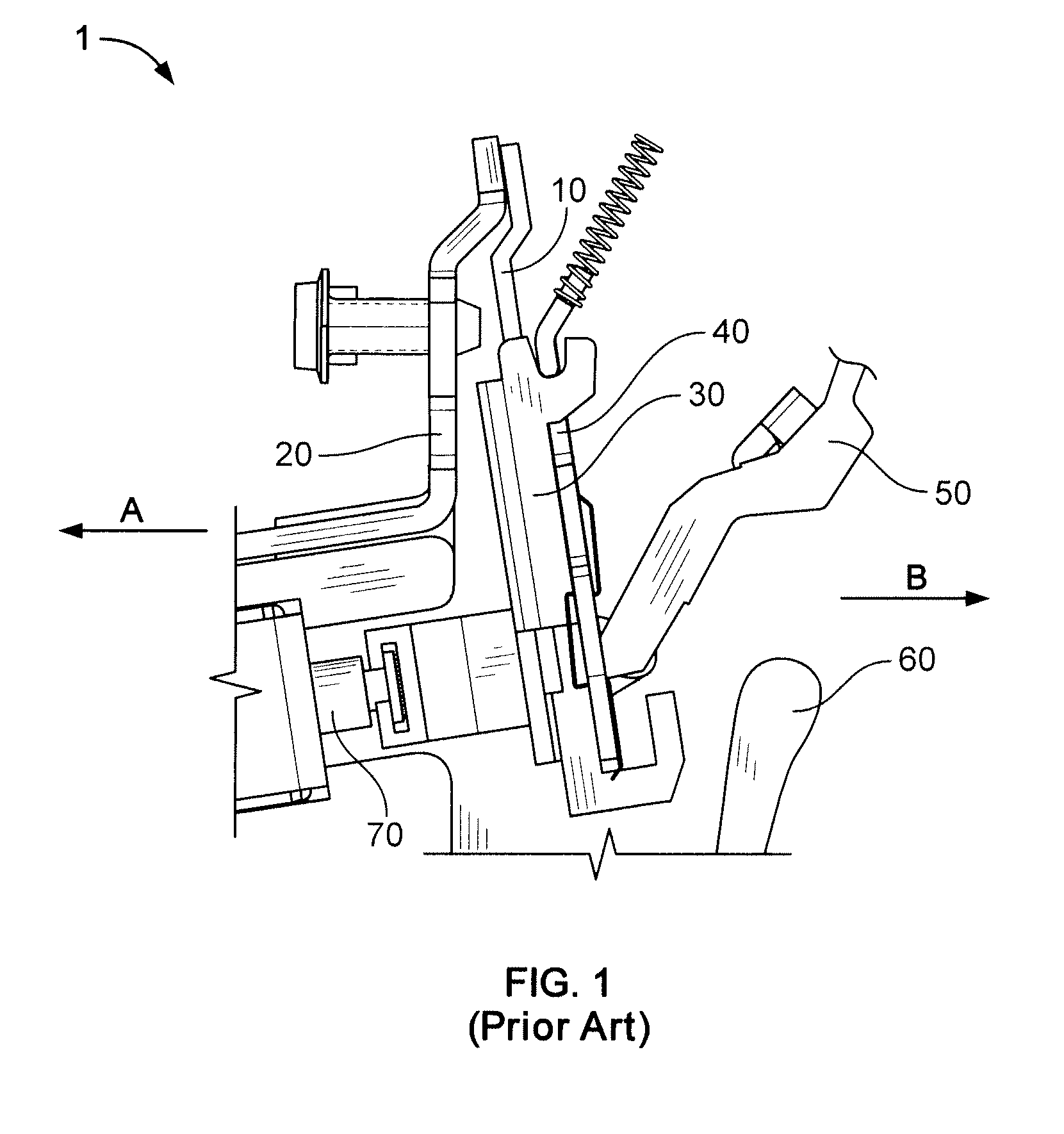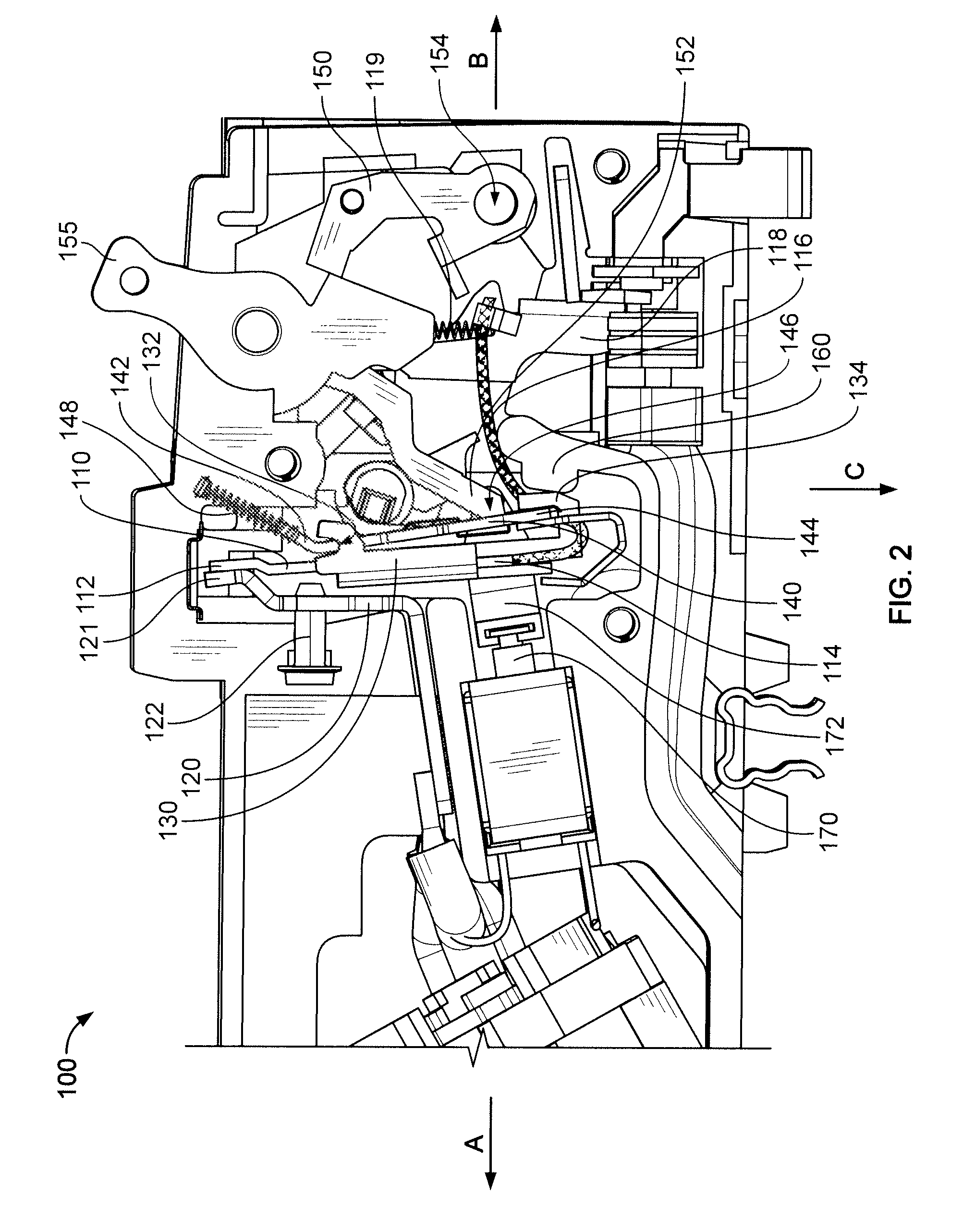Circuit breaker having reduced auxiliary trip requirements
a circuit breaker and auxiliary trip technology, applied in the field of circuit breaker, to achieve the effect of reducing tripping requirements
- Summary
- Abstract
- Description
- Claims
- Application Information
AI Technical Summary
Benefits of technology
Problems solved by technology
Method used
Image
Examples
Embodiment Construction
[0018]Although the invention will be described in connection with certain preferred embodiments, it will be understood that the invention is not limited to those particular embodiments. On the contrary, the invention is intended to include all alternatives, modifications and equivalent arrangements as may be included within the spirit and scope of the invention as defined by the appended claims.
[0019]Referring now to the drawings and initially to FIG. 2, there is shown a circuit breaker 100 that includes a bimetal 110 attached to a load terminal 120 at a load end 112 of the bimetal 110 and to a yoke 130 at a free end 114 of the bimetal 110. The free end 114 of the bimetal is attached to a flexible pigtail conductor 116 such that the bimetal 110 is directly heated by the attached pigtail conductor 116. According to some embodiments, the circuit breaker is a miniature circuit breaker with an overall width of a housing of the circuit breaker being about 1 inch or smaller, preferably ab...
PUM
 Login to View More
Login to View More Abstract
Description
Claims
Application Information
 Login to View More
Login to View More - R&D
- Intellectual Property
- Life Sciences
- Materials
- Tech Scout
- Unparalleled Data Quality
- Higher Quality Content
- 60% Fewer Hallucinations
Browse by: Latest US Patents, China's latest patents, Technical Efficacy Thesaurus, Application Domain, Technology Topic, Popular Technical Reports.
© 2025 PatSnap. All rights reserved.Legal|Privacy policy|Modern Slavery Act Transparency Statement|Sitemap|About US| Contact US: help@patsnap.com



